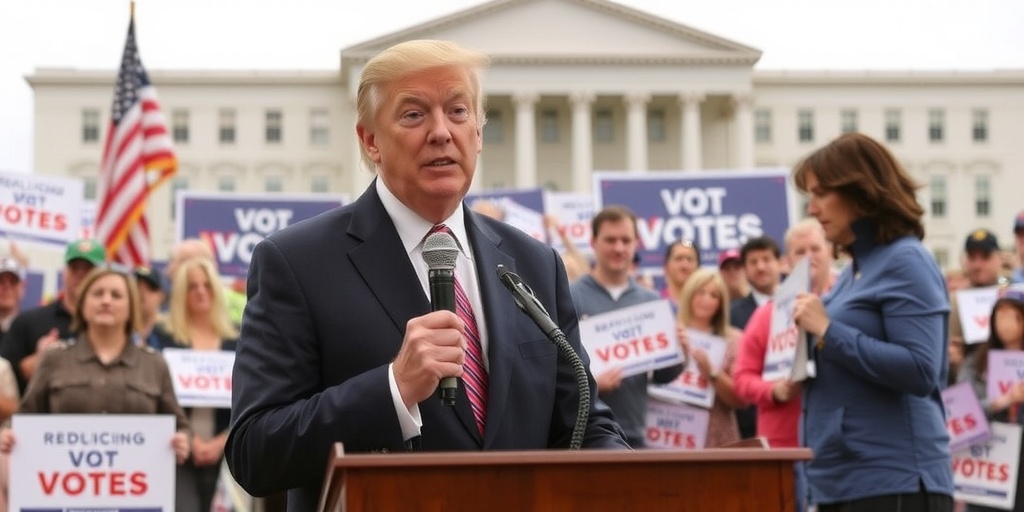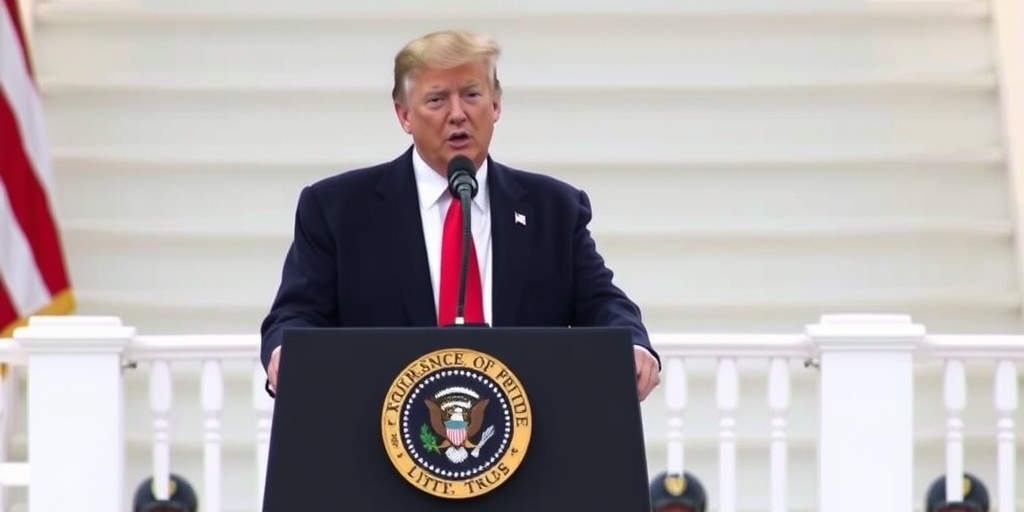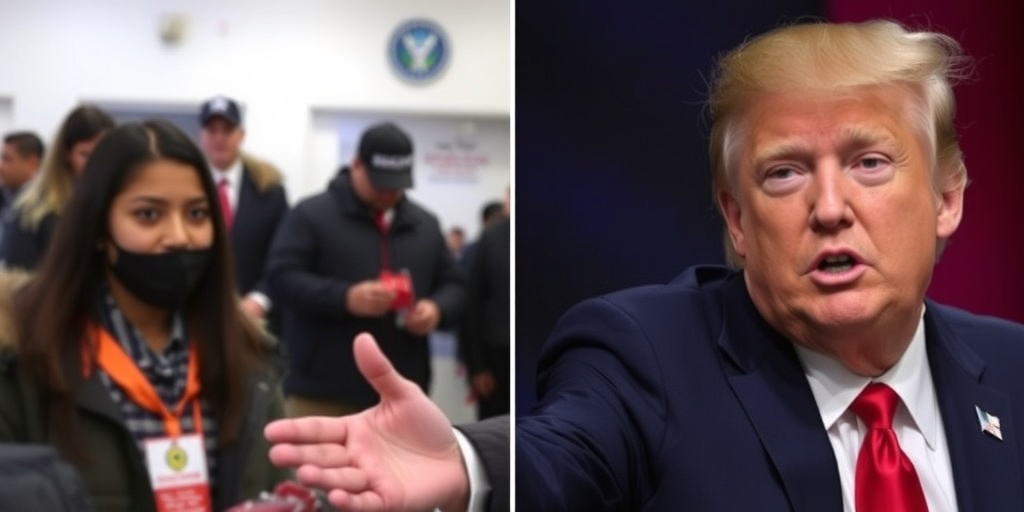Now Reading: Trump Delays Tariffs, Signals Future Trade Measures
-
01
Trump Delays Tariffs, Signals Future Trade Measures
Trump Delays Tariffs, Signals Future Trade Measures

Trump’s Executive Order Signals a Shift in Trade Strategy
On Monday, President Trump is set to unveil an executive order that will halt the immediate imposition of tariffs on imported products. Instead, he will direct federal agencies to begin a comprehensive study of various trade issues that could pave the way for potential tariffs on goods from several countries, including China, Canada, and Mexico, in the months to follow. This strategic decision indicates a more tempered approach by Trump as he seeks to fulfill a pivotal campaign promise to reshape America’s trading relationships using tariffs.
While the executive order will not lead to immediate tariffs, it reflects Trump’s ongoing commitment to utilizing tariffs as a tool for reordering international trade. This measured tactic is likely to postpone conflicts that have been brewing with foreign nations, as these governments have indicated their willingness to retaliate against any tariffs imposed by the U.S.
The executive order will set into motion a wide-ranging investigation into multiple trade-related topics. Included in this list are trade deficits, existing trade agreements with countries like China, Canada, and Mexico, and compliance with the terms laid out in the recent trade deals signed during Trump’s first presidency. This extensive inquiry could provide Trump with the leverage to target a variety of imported goods for tariffs, thus potentially disrupting international supply chains and triggering global trade disputes in the near future.
Among the specific areas of focus for federal agencies will be the investigation of unfair trade practices and currency manipulation by foreign governments. Additionally, the order will necessitate the assessment of the feasibility of creating an “External Revenue Service” aimed at efficiently collecting tariffs and related duties. This move is designed to reduce the loopholes that have allowed some foreign goods to evade tariffs, particularly those low-value goods that come into the U.S. without incurring additional taxes.
Another key aspect of Trump’s upcoming executive order involves a study of the existing tariffs that the United States has imposed for national security reasons. Trump has previously highlighted how tariffs serve as both a means of protecting American workers and as a negotiating tool in international relations.
Despite holding off on immediate tariff measures, Trump and his advisers maintain that tariffs have immense potential. They are considering a multifaceted strategy that could involve implementing a universal tariff on foreign imports, increasing tariffs specifically on China, and exploring additional measures targeting trade with Mexico and Canada.
In his inaugural address on Monday, Trump reiterated his commitment to overhauling the American trade system, stating that he would “immediately begin the overhaul to protect American workers and families.” He expressed optimism, claiming that tariffs will generate “massive amounts of money pouring into our Treasury,” and emphasized his vision for rejuvenating the “American dream.”
Supporters of Trump’s tariff policies argue that they can breathe new life into U.S. manufacturing and provide government revenue to fund tax cuts. However, the economic implications of such tariffs are fiercely debated. While some manufacturers attribute their ability to withstand competitive pressures to the tariffs imposed during Trump’s first term, critics point out that tariffs may ultimately harm the economy by raising prices for consumers and provoking retaliatory actions from other nations.
As Trump’s executive order potentially casts a long shadow over international trade relations, foreign governments are on alert. They are keen to foster closer ties with the Trump administration in hopes of avoiding being on the receiving end of any tariff actions.
Canadian officials, for example, have reportedly compiled a list of American goods they intend to tax in response to any tariffs levied by Trump, highlighting items such as Florida orange juice, Tennessee whiskey, and Kentucky peanut butter. Similarly, Mexico and the European Union have threatened to enact retaliatory tariffs on American exports if Trump follows through on his plans.
Historically, Trump has triggered significant shifts in U.S. global trade dynamics with his previous imposition of tariffs on washing machines, solar panels, metals, and a range of products from China. His earlier actions nearly doubled the average tariff rate on imported goods, positioning the U.S. tariff rates as comparatively low on the international scale.
Economists are increasingly voicing concerns over Trump’s potential plans to further expand tariff policies. They argue that while tariffs can offer some insulation to specific American industries, the broader economic impact often leads to increased costs for consumers and domestic businesses reliant on imported goods. Lydia Cox, an economist at the University of Wisconsin-Madison, noted that tariffs are “a pretty blunt instrument,” expressing that while they may provide short-term benefits for some sectors, they often result in widespread collateral damage throughout the economy.
As Trump prepares to roll out his executive order, the anticipation surrounding its implications for both domestic policies and international relations grows, signaling a new chapter in American trade strategy.
Stay Informed With the Latest & Most Important News
Previous Post
Next Post
-
 01New technology breakthrough has everyone talking right now
01New technology breakthrough has everyone talking right now -
 02Unbelievable life hack everyone needs to try today
02Unbelievable life hack everyone needs to try today -
 03Fascinating discovery found buried deep beneath the ocean
03Fascinating discovery found buried deep beneath the ocean -
 04Man invents genius device that solves everyday problems
04Man invents genius device that solves everyday problems -
 05Shocking discovery that changes what we know forever
05Shocking discovery that changes what we know forever -
 06Internet goes wild over celebrity’s unexpected fashion choice
06Internet goes wild over celebrity’s unexpected fashion choice -
 07Rare animal sighting stuns scientists and wildlife lovers
07Rare animal sighting stuns scientists and wildlife lovers




















